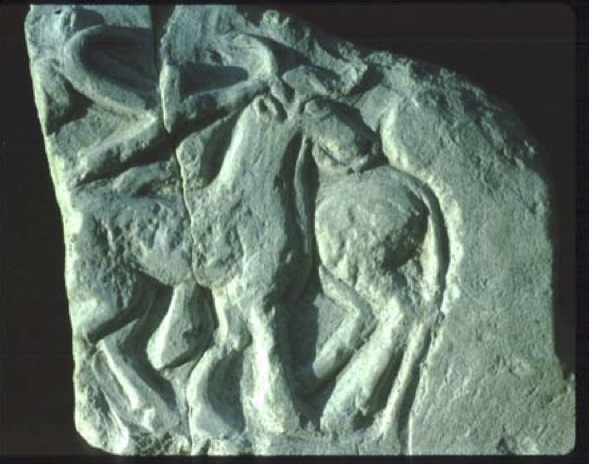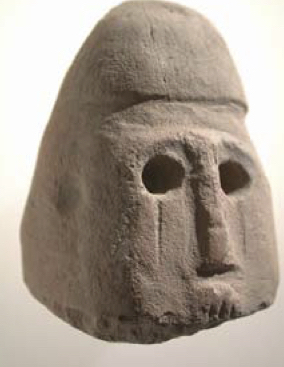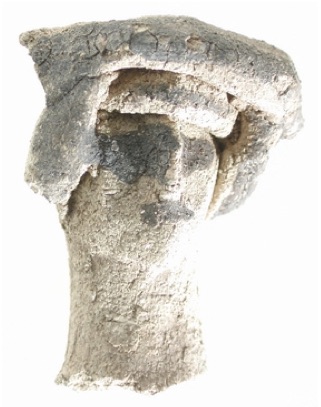Also from the area of the temple came a small stone stela carved on both sides. This freestanding monument depicts on one side a group of animals with the unusual feature that all the animals are shown in movement. Our stele all the animals are depicted in a naturalistic composition that gives the feeling of a milling animal herd. On the opposite side of the stele the theme is even more striking. A plowman is shown holding his plow behind a draft animal while his dog is placed above him. The plowman is positioned at one end of the scene with a diagonal line behind him. Dramatically the plowman has his right foot against this line as if he is pushing off, as it were, from the diagonal. This forward thrust is accentuated by the forward bend of the body and head of the plowman and the movement shown in the legs of his draft animal. This emphasis on movement is not found in Sumerian art but appears in battle reliefs of the Akkadian period.
From a later stratum dating to the last years of the third millennium came a clay statuette, 29cm tall, of a nude female with a bowl-like depression on the top of her head. She wears a necklace, has pierced ears and double lobed earrings. This type of earring is found in gold at other third millennium sites such as in the Royal Cemetery at Ur. The depression on top of her head may have been the anchor for a headdress or may have contained another object during certain periods of time, as would possibly be necessary for cult functions. Two other heads are striking (one of stone with deep holes for eyes) and a second painted example of a man with painted moustache and kafiah-like headdress.



